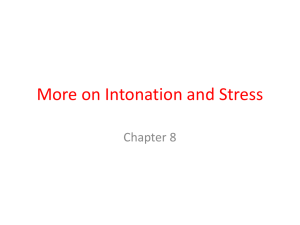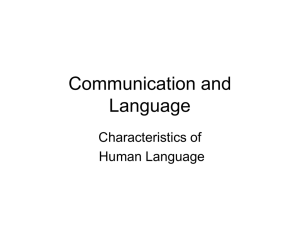This paper is one of a series of individual essays written within the
advertisement
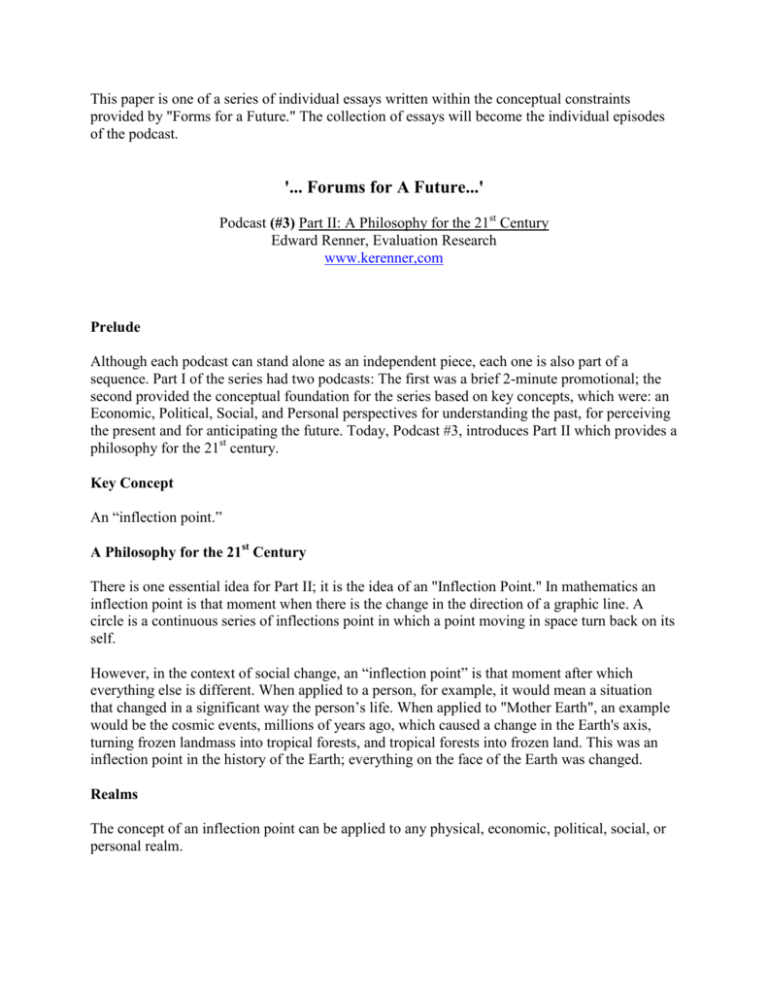
This paper is one of a series of individual essays written within the conceptual constraints provided by "Forms for a Future." The collection of essays will become the individual episodes of the podcast. '... Forums for A Future...' Podcast (#3) Part II: A Philosophy for the 21st Century Edward Renner, Evaluation Research www.kerenner,com Prelude Although each podcast can stand alone as an independent piece, each one is also part of a sequence. Part I of the series had two podcasts: The first was a brief 2-minute promotional; the second provided the conceptual foundation for the series based on key concepts, which were: an Economic, Political, Social, and Personal perspectives for understanding the past, for perceiving the present and for anticipating the future. Today, Podcast #3, introduces Part II which provides a philosophy for the 21st century. Key Concept An “inflection point.” A Philosophy for the 21st Century There is one essential idea for Part II; it is the idea of an "Inflection Point." In mathematics an inflection point is that moment when there is the change in the direction of a graphic line. A circle is a continuous series of inflections point in which a point moving in space turn back on its self. However, in the context of social change, an “inflection point” is that moment after which everything else is different. When applied to a person, for example, it would mean a situation that changed in a significant way the person’s life. When applied to "Mother Earth", an example would be the cosmic events, millions of years ago, which caused a change in the Earth's axis, turning frozen landmass into tropical forests, and tropical forests into frozen land. This was an inflection point in the history of the Earth; everything on the face of the Earth was changed. Realms The concept of an inflection point can be applied to any physical, economic, political, social, or personal realm. As people, we are probably most familiar with personal inflection points. They are life events that forever change a person. As a personal illustration, the most important inflection point in my life came as a result of going to college. I assumed that I would complete a four-year degree and go to work like most people. Little did I know then what was ahead. I found that I was not satisfied with just learning facts. In my psychology class, for example, I was not satisfied to learn that a test could measure how happy you are. I wanted to know: “What is happiness?” And, “How you would know?” I had a professor who introduced me to psychological research; he opened the door to the process of how to study and explain human behavior. That was an inflection point in my life, and I can tell you exactly when and where it happened: It was in 1954 and 1955 at the Junior College in my hometown of Altoona, PA. But, inflection points can also be economic or social or political. An example of a political inflection point was the creation and use of the atomic bomb. That event forever changed world politics. War between nations took on a new meaning and made it imperative that the nations of the world find some means to make sure that atomic weapons would never be used again. That was an inflection point in history of the world. Types Some inflection points are due to external causes. They are events over which human kind has no control. The Ice Age due to the shift of the Earth's axis is one example. (Many other examples may be found in Jerad Diamond’s book.) However, other inflection points, and their consequences, are the result human actions and decisions. A modern example is Global Warming, which is the consequence of the CO2 emissions of our modern industrial world. One outcomes of global warming has been the melting of the Earth's icecaps. Of particular concern is the western ice shelf of the Antarctic. There are signs that it is becoming detached and could slide off into the ocean. Because it is the size of Greenland it would raise sea levels around the world by 20 feet. This would put one third of Florida underwater, in Beijing 20 million people would be displaced, and in Bangladesh the home of 60 million people would be under water. This would be an inflection point of major proportions. It would disrupt the stability of the world. Things would never be the same, ever again. (Al Gore’s book An Inconvenient Truth documents this threat along with a complete documentation of other challenges to our future posed by global warming,) A “Point” as an Interval An inflection point need not be a brief moment in time. In fact, significant inflection points usually occur over some period of time during which the important changes takes place. For me, personally, the change took place over the two years I spent at the junior college in my hometown. For the atomic bomb, although August 6, 1945 marked the exact moment when nuclear weapons became a reality, in fact, it was known for many years that atomic bombs were theoretically possible. Thus, it was just a matter of time until one would be produced, unless, during that period the political leaders were able to deter its development. Of course, as we know, they were not, and the world experienced an inflection point. 2 Because inflection points usually occur over a period of time they offer the possibility of being anticipated. This interval of time offers us an opportunity to plan for the change and to avoid unwanted negative consequences. The consequences of global warming are an example. We know what will happen. But yet, it is not clear that collectively human kind (on a world-wide basis) has the political capacity to make an adequate response to reverse the process. This is especially true in light of the current foreign policy directions of the United States. (See Dyer’s book for an extended discussion of why this is the case.) In contrast, the people who settled Easter Island (described in Jerad Diamond's book) in about 800AD were probably unaware that cutting down the trees at a rate necessary to support their growing population would cause soil erosion that would destroy their agricultural base. And, with less crops that they would over fish and over harvest the nesting birds, resulting in a complete collapse of the capacity of the people to feed themselves. The Point of No Return Another defining characteristics of inflection points are that they represent a “point of no return,” or are “the straw that breaks the camel's back.” More recently, Malcolm Gladwell popularized the graphic phrase “The Tipping Point" to label the same process. August 6, 1945 marked the point of no return, or the tipping point, for nuclear warfare. For me, personally, the tipping point was 1954 and 1955. I had worked while I was undergraduate. I had saved money to buy a motorcycle to take a road trip when I graduated. But, by then it was too late; I had passed the tipping point. A road trip on a motorcycle was no longer in the picture. Something else had taken over my life. The money was for books and tuition. For the people on Easter Island, the population growth accelerated in the beginning in what was then a land of plenty. However tree consumption increased proportionately with population growth. At some moment in time, the tipping point was crossed. There were fewer and fewer trees to meet the needs of greater and greater numbers of people. At some point, there was no longer enough time for the re-growth of a sufficient number of trees to stop the soil erosion. Thus, the over fishing and over harvesting of nesting birds completed the circle. Famine, war and social collapse were inevitable. Once too many of the trees were cut down, there was no possibility of recovery. So, too, it is with global warming. There is no immediate "Off" switch. The sun’s rays, trapped in the Earth's atmosphere, will continue to warm the Earth even after we start to reduce the levels of CO2. It will take an extended period of time to undo the damage we have done. Some estimates are that we are 10 years away from the tipping point. If we have not started to reverse global warming by then, we will be like the people on Easter Island. The warming will continue and will do irreparable damage to the Earth, perhaps as severe as losing the Antarctic ice shelf into the ocean, causing sea levels to rise 20 feet world-wide. Summary So, what do we need to understand for developing the philosophy for having a future in the 21st Century? I will suggest that there are three elements which comprise the three podcasts of Part II: 3 The first, is the idea that the year 2000 was an inflection point. It marked the end of the Modern Era. In short, things are really different now. This will be podcast #4. The second, is what does it mean personally and psychologically to be at the end of an era? If Easter Island is a metaphor for the present it means we must change core beliefs and values in order to have a future. But, how does this happen? What is required of human nature for someone to say: “I am different now.” This is podcast #5. The third, is what is on the other side of the inflection point? What are the shape and the form of the Post-Modern Era we have just entered? Welcome to the future. What an exciting time to be alive. This is podcast #6, and it will complete Part II of the series. 4
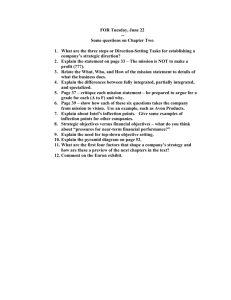
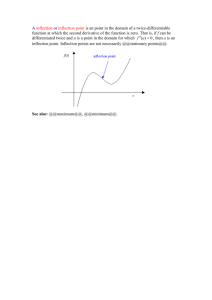
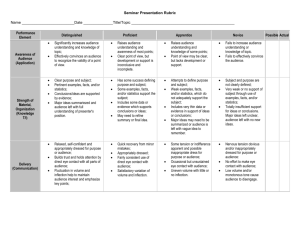
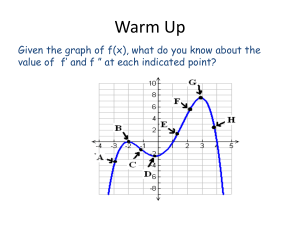

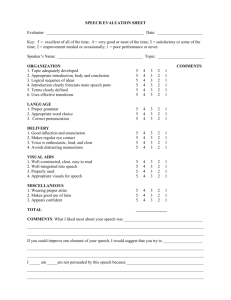
![Inflection points [4.2]](http://s2.studylib.net/store/data/005711558_1-7e6caa30b78ed23b978b40c18112cd02-300x300.png)

